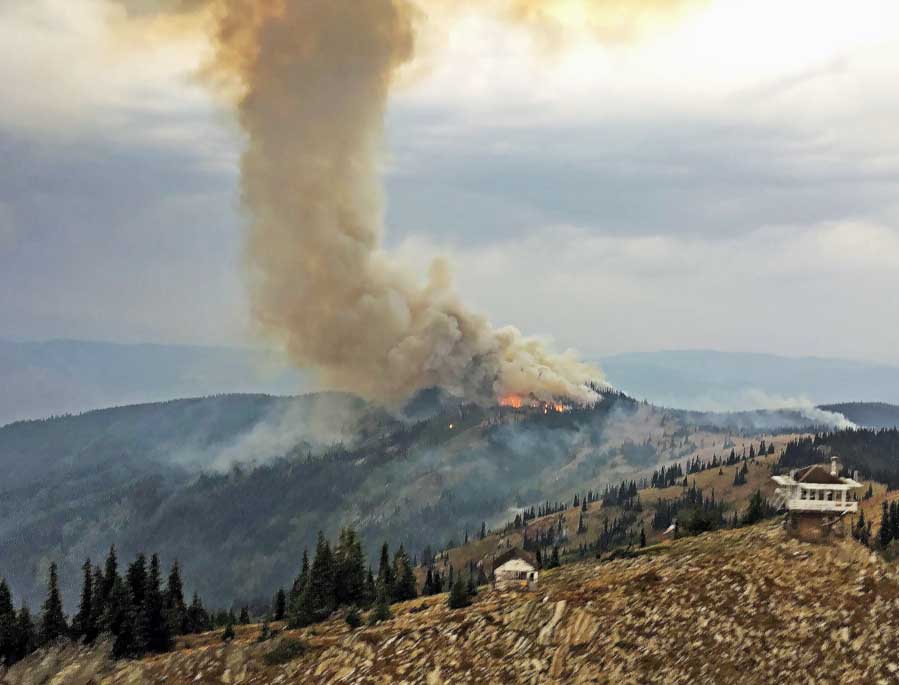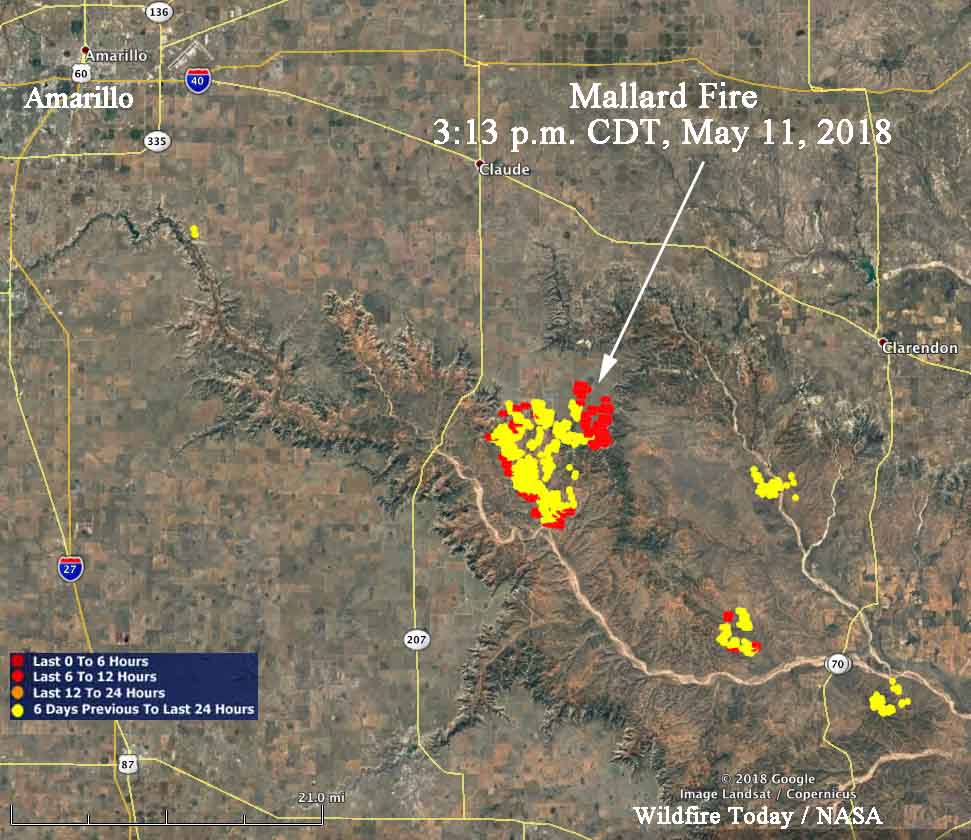Above: Map showing the location of the Pinery Fire in Southeast Arizona. The red dots represent heat detected by a satellite at 3:57 p.m. MDT May 11, 2018.
(Originally published at 8:17 p.m. MDT May 12, 2018)
A fire that started at 1:30 p.m. Saturday has forced the evacuation and closure of Chiricahua National Monument in Southeast Arizona. The cause is under investigation but it started on private land, moved onto the Chiricahua National Monument, and has since spread north onto the Coronado National Forest.
Our very unofficial estimate based on 3:57 p.m satellite data is that at that time it had burned approximately 400 acres. At 8 p.m. local time the National Park Service estimated the size at 675 acres.
Red Flag conditions on Saturday, including wind gusts up to 37 mph, are making containment difficult. The forecast for Sunday includes more Red Flag Warnings for the fire area with 86 degrees, 14 percent relative humidity, mostly sunny skies, and southwest winds of 13 to 25 mph with gusts up to 37 again.
The fire is under joint command of the Arizona Department of Forestry and Fire Management, the National Park Service, and the Coronado National Forest.
Multiple aircraft have been ordered, including 5 single engine air tankers, 4 large air tankers, and 3 helicopters. Seven engines, 2 initial attack crews, and 2 hotshot crews are working on the ground trying to stop forward progress. Additional resources have been ordered, including four more hotshot crews. The fire is 32 miles southeast of Willcox, 20 miles south of Interstate 10, 19 miles west of the Arizona/New Mexico border, and 44 miles north of the international border.








